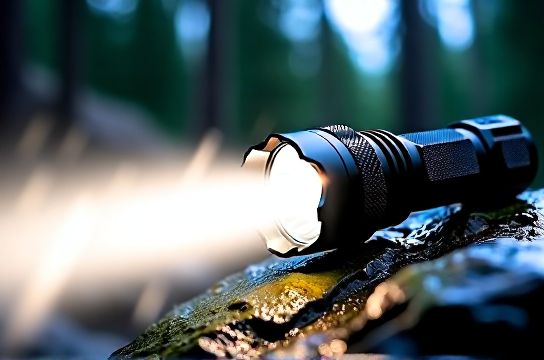Outdoor Flashlights Built to Survive Harsh Conditions
- 时间:
- 浏览:14
- 来源:OrientDeck
When you're out in the wild, the last thing you want is your flashlight giving up on you. Whether you're hiking through dense forests, camping in freezing temperatures, or caught in a sudden downpour, a reliable outdoor flashlight isn't just convenient—it's essential. But not all flashlights are built the same. So, what makes an outdoor flashlight truly tough? Let’s dive into the rugged world of high-performance lighting and spotlight the features that separate the survivors from the strugglers.

What Makes a Flashlight 'Rugged'?
A flashlight built for harsh conditions needs more than just brightness. It must be durable, weather-resistant, and dependable when it matters most. Key factors include:
- Water Resistance (IPX7 or higher): Can it survive being submerged?
- Impact Resistance: Will it still work after a 2-meter drop?
- Brightness (Lumens): Enough to light up a campsite or signal for help?
- Battery Life: Long runtime without constant recharging?
Top Rugged Flashlights Compared
Here’s a quick comparison of some of the toughest flashlights on the market right now:
| Model | Max Brightness (Lumens) | Water Resistance | Drop Resistance | Battery Life |
|---|---|---|---|---|
| Fenix PD36 Pro | 3000 | IP68 | 1.5m | 150 hours |
| Olight Warrior X Pro | 2250 | IPX8 | 2m | 90 hours |
| Nitecore P20iX | 3500 | IP68 | 1.5m | 120 hours |
| SureFire Defender Max | 2000 | IPX7 | 1m | 200 hours |
As you can see, models like the Nitecore P20iX lead the pack in raw power, while the SureFire Defender Max wins in endurance. The Fenix PD36 Pro strikes a solid balance between brightness, durability, and battery life—making it a favorite among backpackers and emergency responders alike.
Real-World Performance: Why Lumens Aren’t Everything
Sure, 3500 lumens sounds impressive—but in real use, beam distance, color temperature, and mode versatility matter just as much. A flashlight with adjustable modes (low, medium, high, strobe) gives you flexibility. Need a soft glow for reading in your tent? Check. Want to blind a curious raccoon at 100 meters? Also check.
Also, don’t overlook build materials. Aircraft-grade aluminum bodies with anti-slip knurling aren’t just for show—they handle shock better and stay grippy even with wet or gloved hands.
Pro Tips for Choosing Your Survival Light
- Pocket vs. Headlamp? For hands-free trekking, consider a headlamp with similar rugged specs.
- Rechargeable vs. Replaceable Batteries: Rechargeables are eco-friendly, but having spare CR123s can save you in remote areas.
- Weight Matters: A 400g flashlight might feel heavy after 10 miles. Aim for under 200g if portability is key.
The Bottom Line
If you’re serious about outdoor adventures, skip the dollar-store LED. Invest in a flashlight engineered for extremes. Look for IP68 ratings, proven drop tests, and trusted brands with real user reviews. When the storm hits and the trail disappears, your light shouldn’t be the weakest link.